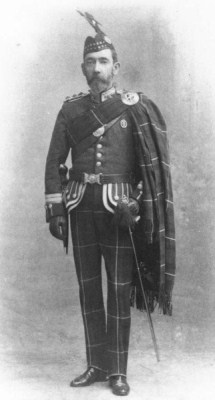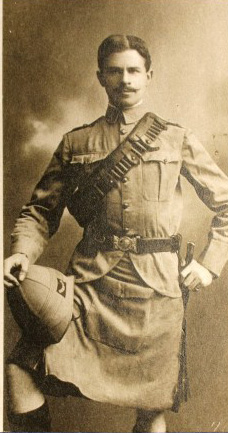The Volunteer Force and the Territorial Force
The Formation (1900-1914)

 The Liverpool Scottish was formed as an infantry battalion in 1900 in response to the crisis of the Boer War, receiving War Office authority on 30th April 1900. The battalion then had an establishment of 1000 men. It was raised from amongst the body of highly educated and professional young Scotsmen in the city as the 8th (Scottish) Volunteer Battalion, The King's (Liverpool Regiment). There was an annual subscription of 10 shillings (50p) and an entrance fee of £2. The founding Commanding Officer was Colonel C. Forbes Bell V.D.
The Liverpool Scottish was formed as an infantry battalion in 1900 in response to the crisis of the Boer War, receiving War Office authority on 30th April 1900. The battalion then had an establishment of 1000 men. It was raised from amongst the body of highly educated and professional young Scotsmen in the city as the 8th (Scottish) Volunteer Battalion, The King's (Liverpool Regiment). There was an annual subscription of 10 shillings (50p) and an entrance fee of £2. The founding Commanding Officer was Colonel C. Forbes Bell V.D.
The Forbes tartan kilt was adopted by the regiment and the Highland full dress uniform featured a khaki tunic with scarlet collar and facings together with a feather bonnet or glengarry and tartan plaid. feather Bonnets were introduced for officers in 1908. The HQ was established in Fraser Street in the Liverpool city centre, the home of the Scottish until 1967.
The Boer War
Leaving Southampton on 25 March 1902 a party of 22 men under Lt. John Watson Jr. went to South Africa with the 4th Service Company of the Gordon Highlanders and were attached to the 1st. Battalion of that regiment. An account of volunteer service in South Africa with the 1st Service Company of the Gordon Highlanders can be found here. The commanding officer was Lt. Watson many of the items below were his. The engraved bottles are examples of what would later in the First World war be called 'Trench Art'.
Formation of the Territorial Force 1908
The Battalion was re-designated in 1908 on the establishment of the Territorial Force as the 10th (Scottish) Battalion, The King's (Liverpool Regiment) with new bonnet and sporran badges.
Preparing for War
As part of the Centenary Commemorations Major I.L. Riley has written a series of articles recounting the experience of the Territorial Force during the First World War. An article on the training of the Territorial Force in the years leading up to the First World War can be found here.
Previous page: The Victorian Era
Next page: The First World War




















